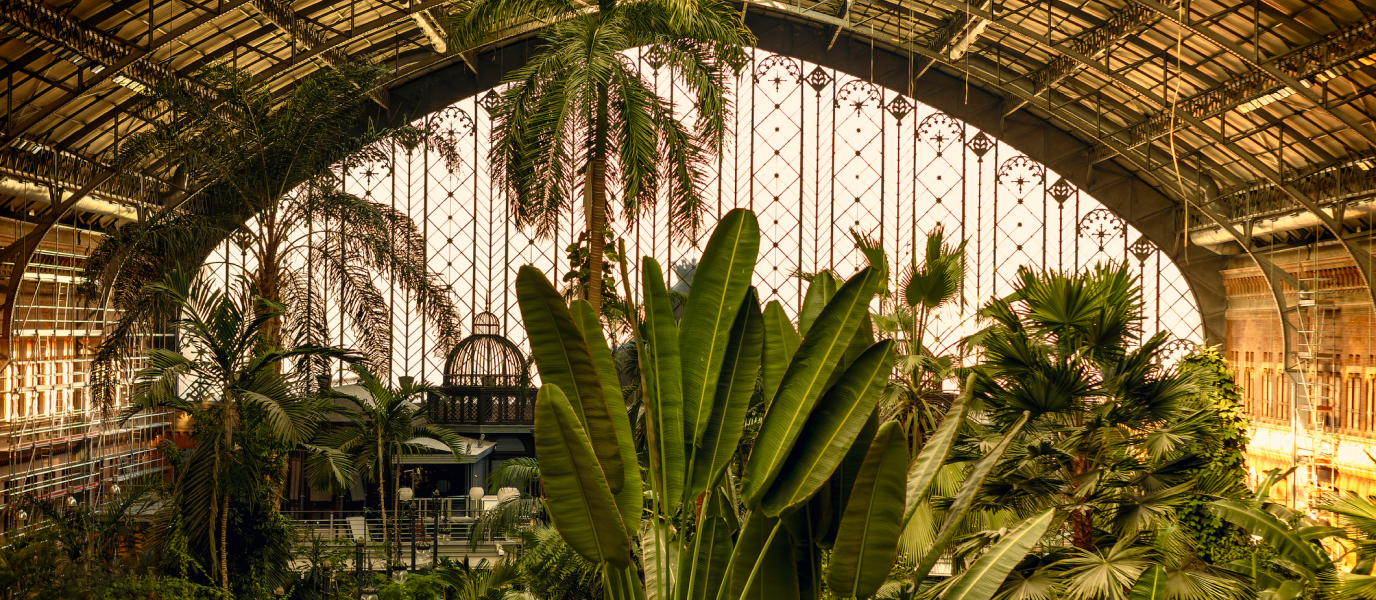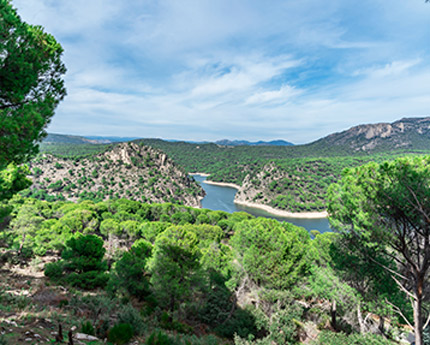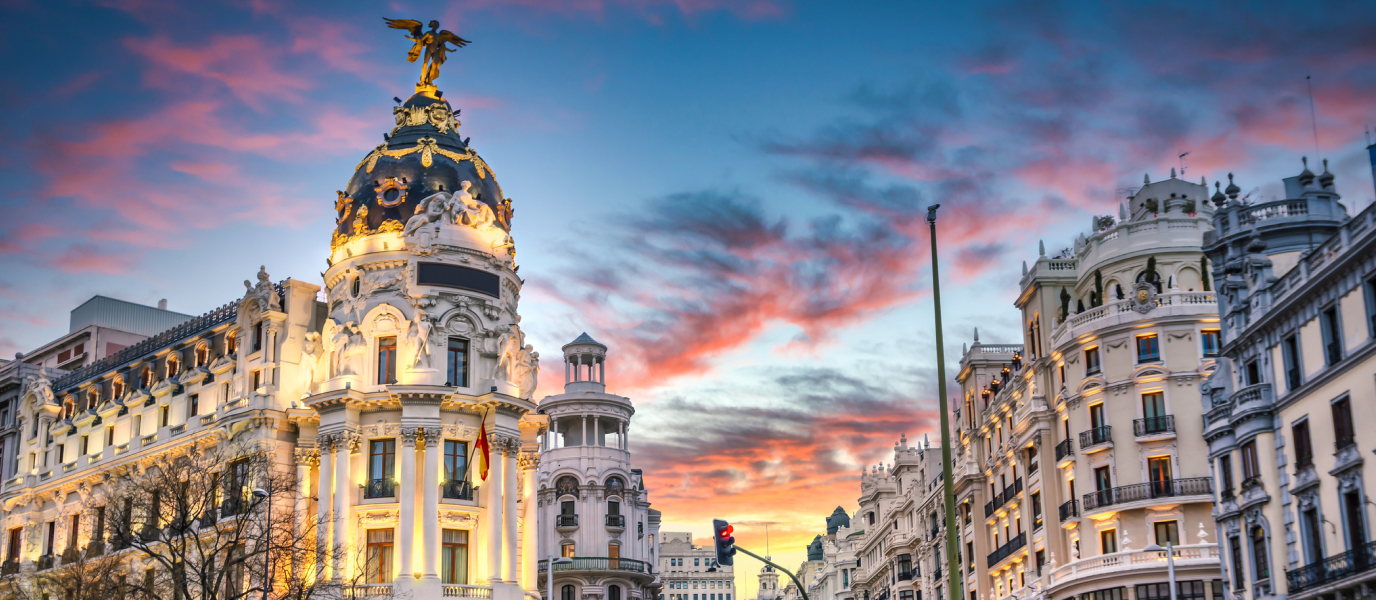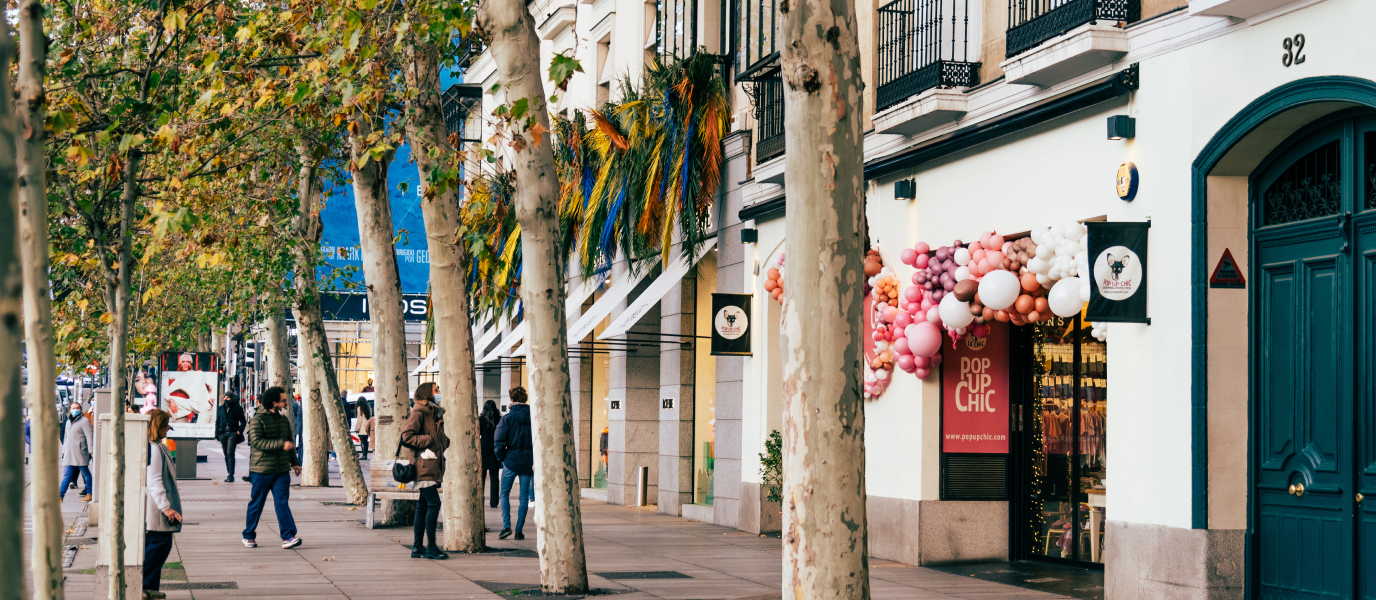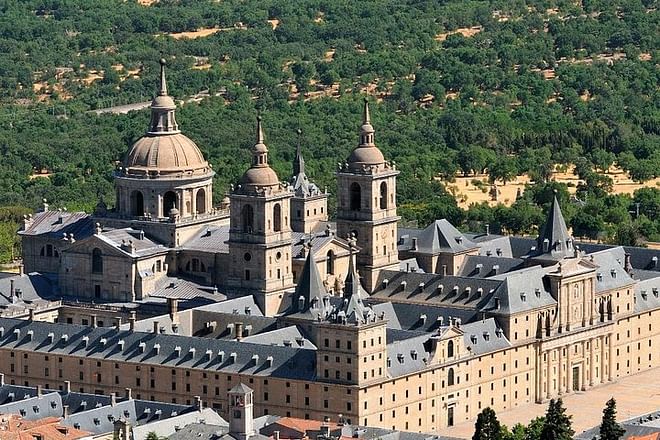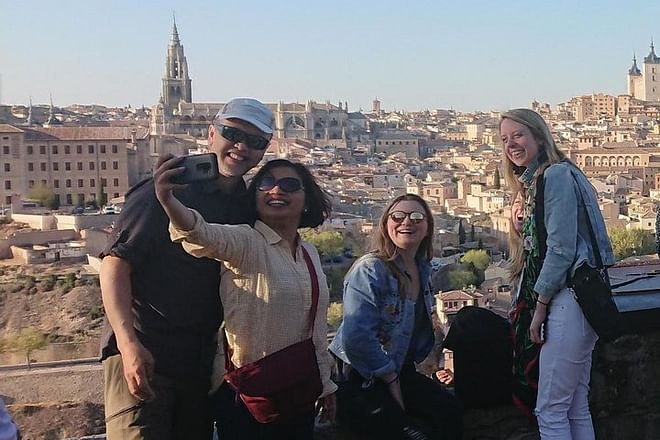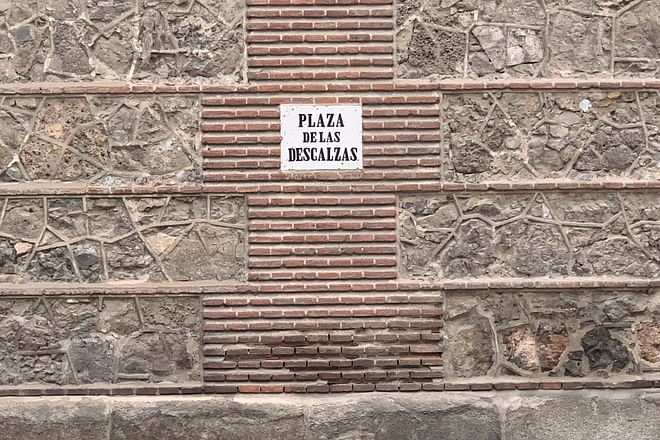‘I’m getting off at Atocha, I’m staying in Madrid,’ sung Joaquín Sabina, an adopted madrileño. If there is one place in the capital of Spain that best symbolises the city’s eternal welcoming spirit, it is Atocha station. The iron heart of Madrid was the first train station to be built in the city in 1851. All of Spain’s railway lines were developed around the infrastructure, the destination of all the routes along which over 100 million passengers per year on average now travel. Its huge central nave, an excellent example of late-nineteenth-century iron architecture, has become an icon of the capital. On 11 March 2004, the station was the principle scene of a terrorist attack by al-Qaeda (four bombs placed on two trains exploded in Atocha), in which 193 people died at different points across Madrid. Needless to say, the event was a sad chapter in the station’s past, yet just another one in the one-hundred-year-old history of this place of crossed paths, reunions and farewells in which life always prevails.
The origins of Atocha: from the Embarcadero to the Estación del Mediodía
On 9 February 1851, Queen Isabella II and her entourage departed for the first time by train to Aranjuez, thus opening the second railway line to be built in Spain. They left from the Embarcadero de Atocha, a simple building with wooden platforms that was the precursor to the current station. Initially built as a private luxury for the royals, the station—then known as the Central Station of Madrid—had to gradually expand and adapt to burgeoning passenger travel, until it was partially consumed by a fire in 1864. The event was a turning point that led to growing use of iron—a safer material than wood—for projects in order to respond to the great demand for rail travel, making a station in line with a great capital such as Madrid a reality. In 1883, the winning project to design the station’s main nave was that of the architect Alberto de Palacio y Elissague, a collaborator of Gustave Eiffel. Its characteristic canopy, however, is the work of the French engineer Henri Saint-James, who built this rail architecture artwork inspired by the iron architecture he had seen at the Paris Universal Exposition of 1867. What had previously been known as the Estación del Mediodía—which, during the twentieth century with the development of rail on the Iberian Peninsula, would become the most important transport hub and the starting point of Spain’s modern-day rail network—was eventually inaugurated in 1892.
Atocha’s great transformation: three stations in one
In the 1980s, the progress of democratic Spain meant that Atocha station soon outgrew its facilities. Given the need to make room for the arrival of AVE (Spanish high speed) trains, the Spanish architect Rafael Moneo was commissioned to remodel the station to adapt it to the new times. Between 1985 and 1992, the rail complex was extended with two new large stations: Puerta de Atocha, built to serve modern AVE trains, and Atocha-Cercanías, dedicated to the daily traffic of people travelling on Cercanías (commuter lines) and medium- and long-distance trains. The latter is also connected to the Metro station (Atocha Renfe) and various bus lines.
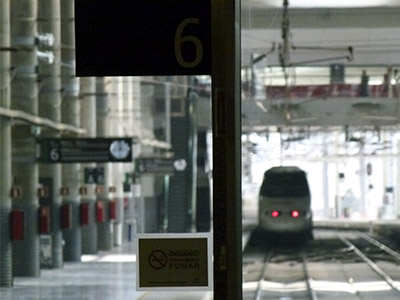
So what is the ‘third’ station of Atocha? It is none other than the old nineteenth-century station, which still occupies an important place within the complex, although it has lost its original rail function. Now, under the great iron and glass canopy, upon the site of the old tracks and original platforms, is a beautiful tropical garden.
The tropical garden of Atocha
One of Rafael Moneo’s great ideas was to make the most of the main central nave—spanning a length of 152 metres and a height of 27 metres—covered with iron and glass like an enormous greenhouse and thus a perfect place for tropical plants. The result is a lush garden extending over 4,000 square metres on the site of the old tracks and platforms, which houses over 7,200 plants of 260 species from five continents. Palm trees, banana trees, coconut trees and breadfruit trees grow under the natural light that shines through the translucent glass canopy with near jungle-like conditions: temperature between 22 and 24 degrees and humidity of up to 70%. The stars of the garden were various Galápagos tortoise, until 2018 when the authorities decided to transfer them to a wildlife rehabilitation centre and to close the pond. The reason for which was the antisocial behaviour of many visitors, who pestered the animals or used their ecosystem as a place to abandon exotic pets.
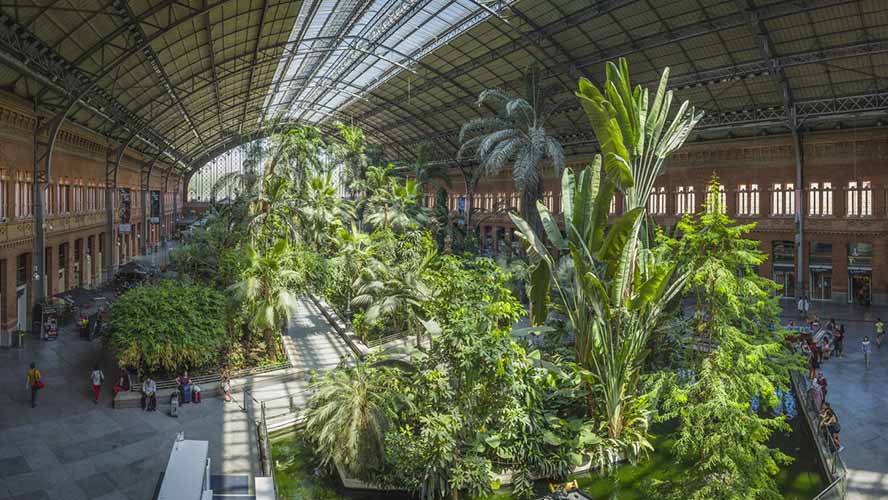
Memorial to the victims of the 2004 bombings
A large glass cylinder in front of Atocha station recalls the morning of 11 March 2004, when the station would be forever marked by the tragic terrorist attack that ended the lives of 193 people. The monument, with a height of 11 metres and a diameter of 9.5 metres, was unveiled by the King and Queen of Spain in 2007. From the station concourse you can access its interior, a translucent blue room on whose walls you can read hundreds of the messages of condolence, which were written and left in the station by anonymous citizens after the attack.
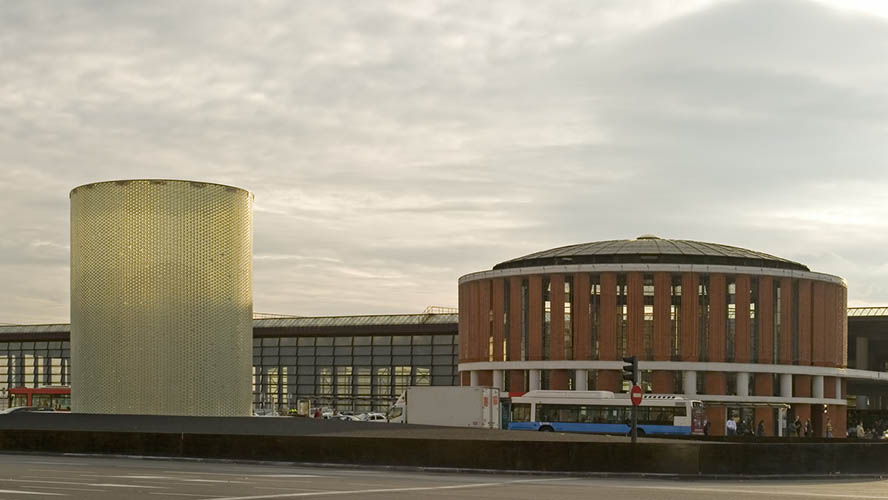
Traveller services at Atocha
Left luggage at Atocha station
One of the most highly valued services at Atocha Station is its left luggage facility, which provides safe lockers – monitored by security guards – for travellers. Train times don’t always coincide with your hotel check-in or check-out times, so the left luggage service at Atocha Station allows you a few hours of freedom to explore the city without your cases.
The left luggage facility is located on the ground floor, behind the tropical gardens, and is open from 5.30 a.m. to 10.20 p.m. There are three sizes of locker to choose from: small, medium and large. You can rent one from a few hours to several days. The Adif webpage provides up-to-date price information.
Restaurants in Atocha
Atocha Station is a small world in its own right. It is a place where travellers have everything they need to enjoy themselves while they wait. Do a spot of shopping, walk through the tropical gardens and even pop into one of the restaurant areas for a quick bite to eat or to savour some true delicacies. You can easily grab coffee, a snack or some fast food in Burger King, Rodilla, Gambrinus, Enrique Tomás, Foodissimo, Puro Gusto, Café Espresso, etc. However, if you have more time, you can sit down in one of the restaurants like Samarkanda, which provides a little break from the hustle and bustle, and serves tasty Mediterranean dishes as well as cocktails. It is generally open from midday to midnight, except on Sundays and Mondays, when it closes at 4 p.m.
What to see near Atocha
The central location of Atocha Station means you can reach some of the capital’s iconic places in a matter of minutes. If you get to the station early and leave your luggage in a locker, take the time to walk around the surrounding area, or even visit some of the Madrid’s best museums.
Museo Nacional Reina Sofía
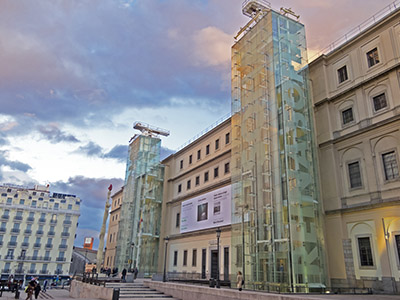
Museo Nacional Reina Sofía, is one of the museums that form Madrid’s ‘Triangle of Art’ and is just in front of Atocha Station. Just cross Plaza del Emperador Carlos V – the square in front of the station – and you will see the impressive building right in front of you. Located in an old hospital, and with a striking extension designed by Jean Nouvel, this art museum displays many works by Dalí, Miró and Juan Gris. However, its star piece is the enormous canvas Guernica, by Pablo Picasso.
It also holds temporary exhibitions that are continually renewed, as well as boasting two excellent restaurants. Arzábal is located in the old Sabatini building, and has a garden terrace. NuBel is in the new building, and serves Mediterranean cuisine in lavish, avantgarde surroundings.
Paseo del Prado
Paseo del Prado is the long leafy street that runs up from the large roundabout of Plaza del Emperador Carlos V – where Atocha Station is located –, meaning it is a great option for strolling to some of the main sights in Madrid. In under ten minutes, you will reach the Botanical Gardens; CaixaForum Madrid (Link: CaixaForum Madrid), with its impressive vertical garden; Museo Nacional del Prado – the most famous art museum in the city –; and the fountains of Neptune and Cibeles.
Parque del Retiro
Parque del Retiro, barely ten minutes from Atocha, is one of the largest green spaces in Madrid. Its 125 hectares provide plenty of options for walking, jogging, cycling and skating. There is also a large boating lake, as well as several exhibition spaces, such as Palacio de Velázquez, Casa de Vacas and Palacio de Cristal. Between the sweeping boulevards, you will find pretty gardens, including a rose garden, and several fountains and sculptures. One of the most spectacular fountains is that of the Fallen Angel — one of only a few in the world dedicated to Satan.
Two of the events that attract most visitors to the Retiro each year are the book fair and the firework display held during the Feria de San Isidro – the festival to celebrate Madrid’s patron saint.

























































